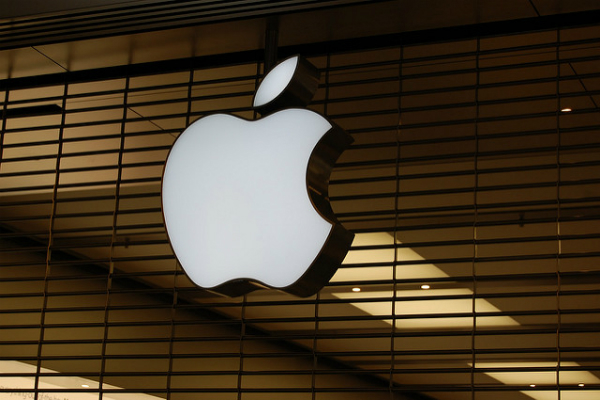 APPS
APPS
 APPS
APPS
 APPS
APPS
Apple Inc. has reportedly decided to slow down its annual software updates for iOS and macOS and instead will spread out new features over the next two years.
The company has decided to make a major change to its development program, rather than having its engineers work on a relentless annual release schedule crammed with new features, according to a report Monday from Bloomberg.
According to people familiar with the change, Apple will continue to have an annual release, but engineers will focus on features that will be released over the next two years, allowing them to move out features that aren’t perfect yet.
Software chief Craig Federighi spoke to his team about the new strategy last month, according to the source. The new strategy is intended to allow Apple to avoid releasing new features with bugs, avoid missing schedules and actually fulfill the promises it makes at its annual developer conference in June.
Apple has yet to confirm the change, but the reported strategy isn’t surprising. The company has faced criticism lately for various software issues or feature delays, with many wondering where its near-perfect software experiences of the past are no more.
Earlier this month it was reported that hundreds of iPhone X users were having difficulty answering calls, while in November the device was having problems working in a cold weather, a bug the company subsequently patched.
Although the tight deadlines and a multitude of features may not be appreciated by Apple engineers, the feature-packed updates are definitely appreciated by consumers and have kept them tied to the Apple ecosystem.
The company’s latest operating system, iOS 11, is currently installed on 65 percent of devices, while 28 percent are running the 2016 iOS 10. In comparison, Google LLC’s latest operating system, Android Oreo, which was released in August, is only on 1.1 percent of devices, while the older versions such as Nougat (28.5 percent), Marshmallow (28.1 percent) and Lollipop (24.6 percent) still make up the bulk of the devices.
Currently referred to internally by the codename “Peace,” one of the biggest features expected in iOS 12 is the ability for a single set of apps to work across iPhones, iPads and Mac computers. The upgrade will form part of the upcoming macOS 10.14 and will possibly bring iPhone apps, such as the Home app for controlling smart home appliances, to the Mac.
Apple is also expected to update its Animojis feature this fall. Apple’s animated emojis feature was released with the iPhone X last year. The updated features for iOS 12 is expected to have new characters and easier-to-navigate menu.
Animojis is also expected to come to the iPad, since the company is reportedly working on an updated iPad with facial recognition due out this year. The animated emojis feature reportedly will also be integrated into FaceTime and can be used during video calls with friends.
The company also plans to launch a Digital Health tool that will allow parents to monitor the amount of time their children have been staring at their iPhone screen. This new tool follows an open letter from two large Apple investors early this year who expressed concern that kids are too addicted to their digital devices.
IOS 12 also is expected to get a redesigned version of Apple’s stock-tracking app, an updated version of the “Do Not Disturb” feature and deeper integration of Siri. The ability for several people to play augmented reality games is also planned.
With the new strategy of unveiling fewer features annually, iOS users will have to wait until 2019 for any significant iPad-focused software upgrades. These include the ability to run several windows in one app and to run two screens from the same app side-by-side.
New features for the Apple Pencil and a toggle to mute notifications from specific threads in the email app have also been pushed out to 2019, as have redesigned home screens for the iPhone, iPad and CarPlay and a revamped Photos app.
Google’s upcoming operating system will reportedly embrace Apple’s controversial “notch” from the iPhone X, in anticipation of other smartphones mimicking the design.
Getting ahead of the anticipated release of foldable devices this year, Android P will also reportedly offer better support for these multiple-screen devices. Various smartphone manufacturers, including Samsung Electronics Co. Ltd., Oppo Electronics Corp. Huawei Technologies Co. Ltd. and Apple, will reportedly enter this niche market over the coming years.
These integrations could help Android boost its user numbers for its upcoming OS. Android P is also expected to focus heavily on Google Assistant, with the update offering support for developers to integrate the digital assistant directly into their apps.
Support our mission to keep content open and free by engaging with theCUBE community. Join theCUBE’s Alumni Trust Network, where technology leaders connect, share intelligence and create opportunities.
Founded by tech visionaries John Furrier and Dave Vellante, SiliconANGLE Media has built a dynamic ecosystem of industry-leading digital media brands that reach 15+ million elite tech professionals. Our new proprietary theCUBE AI Video Cloud is breaking ground in audience interaction, leveraging theCUBEai.com neural network to help technology companies make data-driven decisions and stay at the forefront of industry conversations.